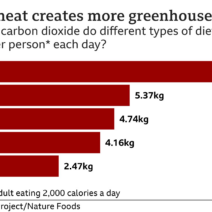The construction industry is one of the largest contributors to greenhouse gas emissions, accounting for an estimated 39% of global carbon dioxide emissions. This statistic poses an intriguing question: can the way we build our structures significantly combat climate change? The answer lies in the burgeoning field of green building, a paradigm shift that champions sustainable construction practices aimed at reducing environmental impact.
Green building, often referred to as sustainable construction, encompasses a holistic approach to the design, construction, and operation of buildings. It assesses the environmental, economic, and social implications of the construction process. By integrating environmentally responsible practices, green buildings aim to improve air quality, promote energy efficiency, and utilize renewable resources. But can these strategies effectively mitigate the looming threat of global warming?
To understand the promise of green building, one must first appreciate its foundational principles. Sustainable architecture seeks to minimize waste, reduce resource consumption, and foster a symbiotic relationship with the environment. Architects and builders are increasingly adopting the “triple bottom line” strategy, which evaluates success based not solely on financial gain but also on environmental and social metrics.
The use of materials that have a lower environmental impact is a cornerstone of green building. Traditional construction materials often involve extensive extraction and processing, resulting in substantial carbon emissions. In contrast, green buildings employ sustainable materials such as reclaimed wood, recycled metals, and low-impact concrete. By opting for these alternatives, builders can substantially reduce the carbon footprint associated with new construction.
Furthermore, the energy efficiency of buildings plays a pivotal role in their sustainability. Structures that are designed to maximize natural light reduce the need for artificial lighting, thereby lowering electricity consumption. Incorporating advanced insulation techniques ensures that buildings remain thermally efficient, reducing the demands for heating and cooling. Renewable energy sources, such as solar panels and wind turbines, are frequently integrated into sustainable designs to further diminish reliance on fossil fuels.
One should also consider the potential adversities in the realm of sustainable construction. For instance, green materials can sometimes be more expensive than traditional options, posing a challenge for budget-conscious builders. However, the long-term savings derived from reduced energy consumption and lower maintenance costs often outweigh the initial investments. Additionally, the market has been evolving, fostering an array of innovations that are driving down the costs of sustainable materials and technologies.
Another interesting facet of green building is its profound emphasis on water conservation. Efficient irrigation systems, rainwater harvesting, and greywater recycling initiatives epitomize the ingenuity that defines sustainable architecture. Consequently, these techniques not only help in conserving precious water resources but also mitigate runoff, reducing the risk of urban flooding. The implementation of permeable surfaces aids in allowing water to filter into the ground, replenishing aquifers and enhancing local ecosystems.
Moreover, the significance of indoor environmental quality cannot be understated. The materials used in green construction are often non-toxic, promoting a healthier living environment for occupants. Proper ventilation and air quality management contribute to overall well-being, as poor indoor air quality is linked to various health issues. This holistic approach ensures that the inhabitants of green structures benefit from cleaner and safer indoor environments, contrasting sharply with the health hazards often associated with conventional construction.
Yet, there remains a question of scalability. Can the principles of green construction be applied universally, in both residential and commercial sectors? The answer is affirmative, as numerous certifications—such as LEED (Leadership in Energy and Environmental Design) and BREEAM (Building Research Establishment Environmental Assessment Method)—demonstrate the versatility and adaptability of sustainable practices across various types of buildings. These certifications not only encourage builders to adopt greener methodologies but also serve as benchmarks for entities aiming to elevate their sustainability profile.
The advent of technology further augments the green building movement. Smart technologies, including building automation systems, play an integral role in optimizing energy use and enhancing operational efficiency. Sensors that monitor occupancy and adjust lighting accordingly ensure that energy is not wasted. Similarly, the Internet of Things (IoT) can be leveraged to facilitate efficient resource management and streamline operations. These technological innovations present a challenge for the construction industry: staying informed and adaptable in a rapidly evolving landscape.
Community engagement is another vital element of green building. The success of sustainable projects often hinges upon the involvement of local stakeholders. By collaborating with local communities, builders can gain insights into indigenous knowledge and practices, leading to designs that are not only environmentally sustainable but also culturally resonant. This participatory approach fosters a sense of ownership, significantly enhancing the project’s acceptance and impact.
As climate change accelerates, the urgency for sustainable construction becomes all the more critical. Green buildings champion a regenerative ethos, challenging society to reconsider its relationship with the environment. They offer a glimpse into a more sustainable future—a future that prioritizes health, wellbeing, and environmental stewardship. By embracing the promise of green building, society can advance a multi-faceted strategy to combat global warming effectively.
In conclusion, green building represents a formidable weapon in the fight against climate change. It challenges conventional construction practices, demanding innovation and sustainability at every turn. While hurdles exist, the potential benefits for both the planet and its inhabitants are monumental. As the demand for efficient, eco-friendly solutions continues to rise, the construction industry holds a pivotal role on the frontlines of environmental care. The promise of green building is not just in its ability to construct sustainably; it lies in its power to renaissance how humanity and its environment coexist.







